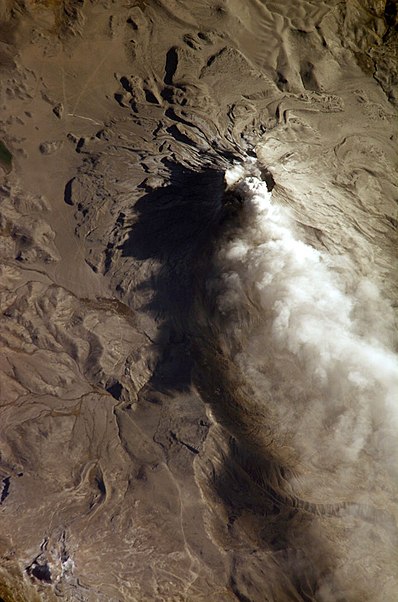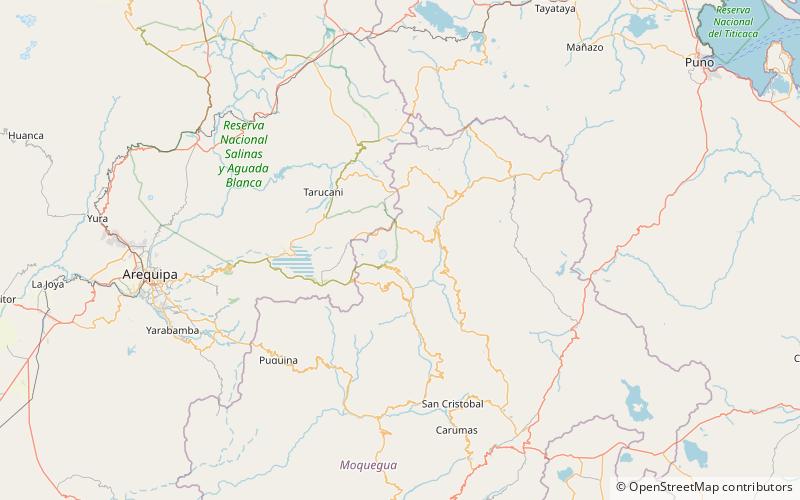Ubinas


Facts and practical information
Ubinas, located in the Moquegua Region of southern Peru, is the country's most active volcano. With a towering elevation of over 5,600 meters, Ubinas presents a formidable figure against the Peruvian landscape. The volcano has a history of frequent eruptions, with notable recent activity occurring in the 21st century, including significant eruptions in 2006, 2014, and 2019.
The stratovolcano, characterized by its conical shape and steep profile, is a prominent feature of the Central Volcanic Zone of the Andes. It has a large, 1.4-kilometer-wide and 150-meter-deep crater that has been the source of Ubinas's explosive eruptions, emitting ash and pyroclastic flows that have impacted surrounding communities and agricultural areas.
Due to its active nature, Ubinas is closely monitored by the Peruvian geological authorities. The volcano's activity poses a constant threat to the nearby villages, and evacuation plans are in place to ensure the safety of the residents in case of a major eruption. The Peruvian government has sometimes declared a state of emergency when Ubinas has shown signs of increased activity, allowing for the rapid deployment of aid and resources.
Despite the dangers it presents, Ubinas is also a site of scientific interest. Researchers study its activity to better understand volcanic processes and to improve prediction models for the benefit of the region's inhabitants. Moreover, the volcano's dramatic landscape attracts adventure tourists and mountaineers, though access is often restricted due to safety concerns.
Moquegua
Ubinas – popular in the area (distance from the attraction)
Nearby attractions include: Parwayuni, Pacoorcco, Qhuyu Parwayuni, Qullpani.







